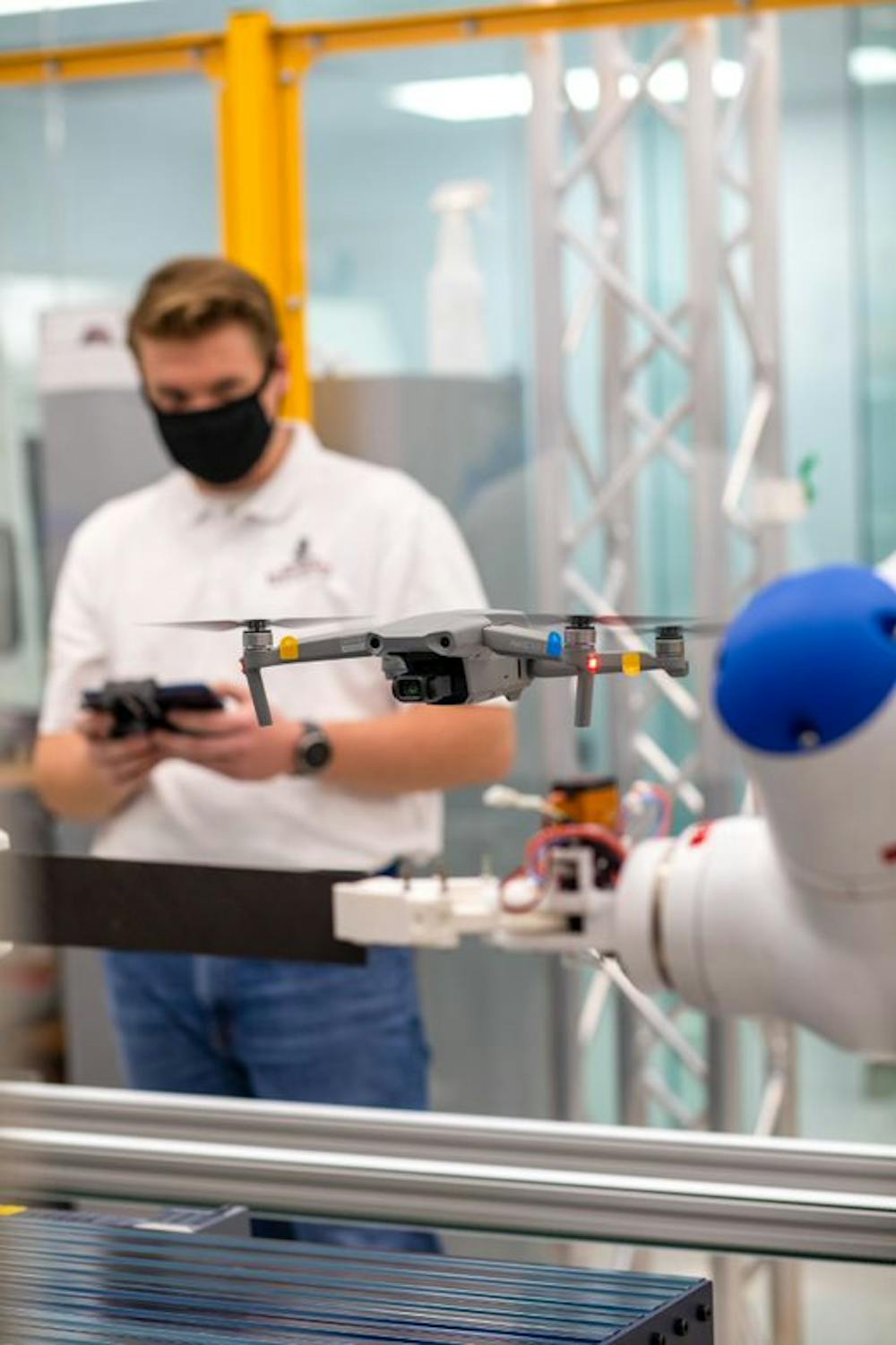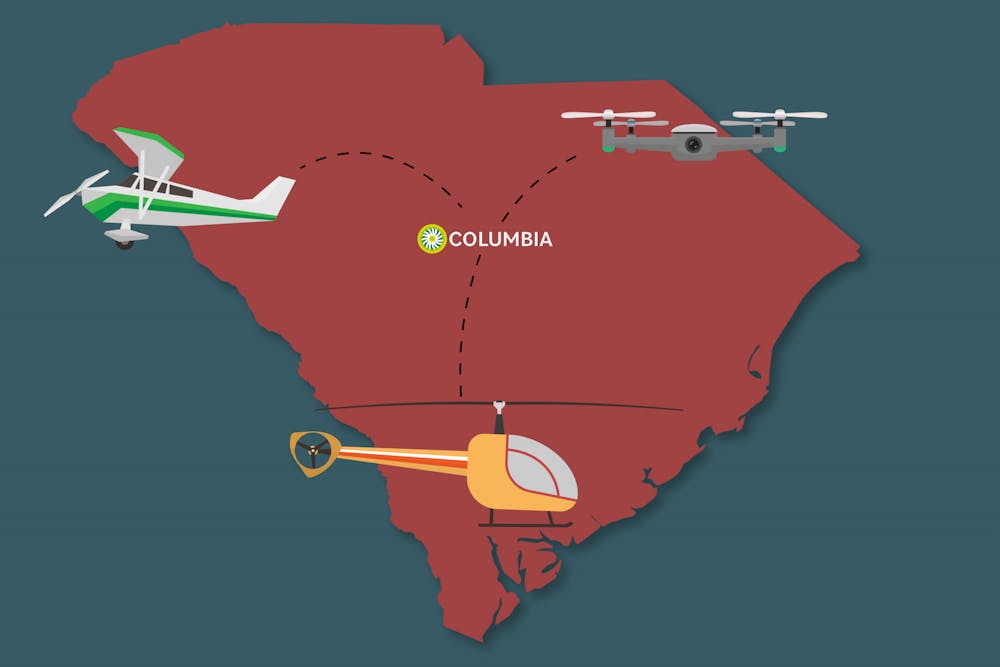USC became home to the state's only undergraduate program in aerospace engineering when the McNair Aerospace Center expanded in 2019.
Originally named for South Carolinian astronaut and physicist Ronald McNair, the then graduate-only program was officially founded in 2011 with the help of donations from chemicals manufacturer CEO Anita Zucker and Darla Moore.

Ramy Harik, McNair resident researcher and University of South Carolina associate professor of mechanical engineering, said the early days of the center were characterized by “a lot of training." He traveled to Illinois and Michigan several times in his first year at the McNair Center to learn to operate machines the center would be using.
Harik said this training allowed him to teach students who would then teach other students, creating a feedback loop of growth for the program.
“I hear people complaining about getting talented students. I never do because they come to me from the system,” Harik said. “They do undergraduate research, they move on to the master, they move on to the PhD. It just trickles; it just flows naturally.”
Chief engineer Burton Rhodes said that research is a primary focus of the still-new undergraduate program.
“[Undergraduates] actually get an opportunity to do a wide range of research tasks, including state of the art literature reviews to see what's going on around the world in the manufacturing environment,” Rhodes said.
Undergraduate research, according to Rhodes, has been responsible for several patents, which students then get to put their names on.
"We're able to produce things that other industry leaders really haven't even been able to produce themselves, so that's definitely been an exciting thing," Rhodes said.
Companies such as Boeing, Blue Origin and NASA have used products developed in the McNair Center, according to Rhodes.
Tayla Robinson, a fourth-year aerospace engineering student, is a member of the first cohort of aerospace engineering undergraduates. As a second-year student, she transferred out of the College of Charleston’s physics program to obtain a more hands-on experience at the McNair Center.
“I think it takes a lot longer to get to the point where you can actually start contributing to the field of physics, like in terms of schooling and expertise, and I just kind of wanted to jump in and get started as soon as I could,” Robinson said.
The undergraduate program, Robinson said, has allowed her to do exactly that. She has been a member of several research teams, including Harik's "neXt" team, which focuses on implementing self-teaching AI on assembly lines in future factories.
"Engineering has become very sort of software and simulation dependent, and I think if you're not constantly sort of checking in to see if whatever you're designing and simulating is practical, you're not going to be a very effective designer and engineer," Robinson said.
Being a member of the first undergraduate class of aerospace students has been "experimental," Robinson said.
For example, Robinson said she and the a few other people in her cohort, which consists of six including herself, once asked to do an aerospace-themed final project for a general engineering class. They ended up getting a two-day crash course in complex software with which they were all unfamiliar.
“I think that the people in the cohort that I'm in just happened to be those type of people that are very quick,” Robinson said. “So, I think we all sort of hold each other accountable, like, whenever something new is thrown in front of us, we don't really despair. We just sort of start doing it.”
The small size of USC’s aerospace programs is one of its distinct advantages, according to Rhodes.
“When you get very large programs, it is harder to get access to the research and the professor,” Rhodes said. “We end up getting a lot more personal connections, let's say with professors. Professors actually know who their students are and care about their outcomes.”
While the program is comparatively small now, Rhodes said it's certainly growing, recruiting professors from around the university to meet demands.
“These days, when it comes to engineering, no problem is simply a mechanical problem or simply an electrical problem. There's a lot of different aspects to the problem that need to be solved by people with varying expertise,” Rhodes said.
Now, over 30 professors from departments as far-flung as visual arts collaborate on the McNair Center’s research. Burton said the center’s future work lies with the defense and space launch industries.
“[There are] a lot of tough challenges there. Going into outer space is very difficult, but a lot of exciting things there,” Rhodes said.

